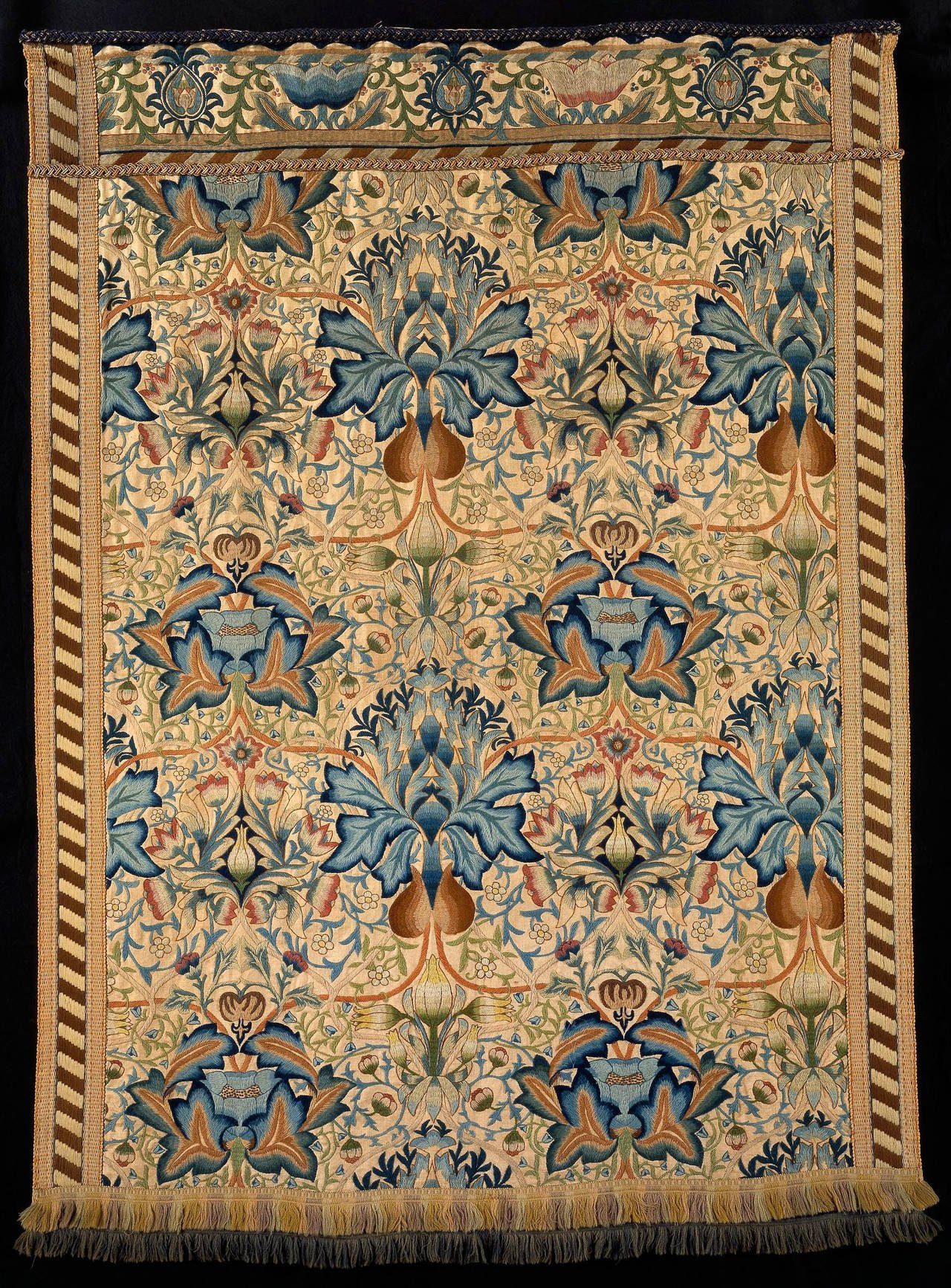William Morris and the Lasting Impact of the Arts and Crafts Movement
Strawberry Thief, furnishing fabric, designed by William Morris, made by Morris & Co., 1883, England—courtesy of Victoria & Albert Museum, London
Arts and crafts has become a familiar household term around the globe that typically brings fun DIY projects or kids playtime to mind. But did you know that there is a fascinating history behind the term ‘arts and crafts’ and a movement that led it to its popularity? At the helm of arts and crafts is handmade furniture, paintings, sculptures, and home decor, but the way that arts and crafts got its start is more fascinating than you may think!
The Arts and Crafts movement
The term ‘arts and crafts’ was coined in 1887 by T.J. Cobden-Sanderson but the actual movement started a few decades prior in Britain. The movement began as a direct rebellion to the growing Industrial Revolution that started back in the mid-1700’s. While some embraced the effects of Industrialism, many came to realize that the quality of goods was far less than handmade items. Additionally, the harmful conditions that large manufacturers and heavy machinery had on the workers lives were detrimental. These workers had to deal with living in cities that were not fit to house a large population thus forcing them into makeshift (and often dangerous) housing. Most of the factories also forced workers to stay long hours on the job, subjected them to hazardous conditions, and all without the proper pay.
The realization of the harmful effects that the Industrial Revolution had on workers and manufactured goods alike sparked the movement towards quality craftsmanship that did not require subjecting workers to dangerous environments. This movement was eventually called the arts and craft movement! Many of the designs that came out of the arts and crafts movement were inspired by romantic and medieval influences. But the most important aspect of these pieces were their uniqueness and quality. These were one-of-a-kind items that were not mass-produced and would be able to stay with you your entire life.
By the late 1800’s the arts and crafts movement had spread across Europe and into North America. In the early 1920’s, Japan started to focus on a similar movement which they called the Mingei movement. Mingei had the same idea as arts and crafts with a focus on handmade, quality goods made without the use of any industrial machines.
By World War I, the arts and crafts movement started to die down as it failed to embrace the much-needed changes of the world as new technology and trends started to arise. At the end of the day, the pioneers of the arts and crafts movement failed to adapt and paired with the financial (and emotional) burden of the war, ultimately caused the movement to fizzle out.
The impact of William Morris
When it comes to the arts and crafts movement, one of the biggest pioneers was William Morris. He was a British textile designer and artist that put an emphasis on well-made goods that were eye-catching and unique. You may have heard of his famous quote, “Have nothing in your house that you do not know to be useful, or believe to be beautiful.” This quote is still widely referred to today across many interior design style trends including minimalism all the way to maximalism!
In the mid-late 1800’s, William Morris would travel around Britain doing lectures and writing essays on the rediscovery of traditional craftsmanship and the techniques that led to high quality goods. These findings helped propel the arts and crafts movement from a tiny idea to a worldwide trending topic. William Morris also created his own company called Morris, Marshall, Faulkners, & Co. where he designed furniture and decorative arts. William Morris was well-known for his wallpaper, designing over 50 unique patterns during his lifetime. He was also very involved in the manufacturing process of his designs to help ensure the quality of the items and also to better appreciate the craftsmanship that went into these unique pieces. Towards his later years is when Morris really got into making furniture. He even left some pieces unfinished so the raw materials and craftsmanship could be properly admired.
Eventually shortened to Morris & Co., the company once known for their part in the arts and crafts movement is now world-renowned for their unique fabrics, patterns, wallpapers, and paints! Morris’s original wallpaper designs can still be found today around the globe on ceramics, fashion accessories, furniture, and more!
The Arts and Crafts movement today
Amitābha Studio Table Lamp crafted from Vintage Royal Delft & custom lampshade made with Acanthus from Morris & Co.
As you can imagine, in today’s world dominated by technology and machines, the arts and crafts movement looks a bit different than it did back in the 19th century. That said, as sustainability and a focus on quality over quantity becomes a larger topic, we are starting to see the same ideas pop up among interior design. We now have access to readily available information to understand how workers are still being treated poorly in factories, the implications mass-made items have on our planet, and the overall poor quality of goods made by some machines.
The difference between the arts and crafts movement in the 19th century and today is that nearly everyone is able to embrace technology while still crafting handmade, quality items. This means the ability to share information with fellow artists, sell items without having to be in big chain stores, and unique ways to craft items at a pace we feel comfortable with.
While the arts and crafts movement has changed drastically in the past century and a half, you can be sure that it’s not going anywhere anytime soon. As long as there is a demand for one-of-a-kind quality items that benefit the buyer and worker alike, the arts and crafts movement will still be thriving!




